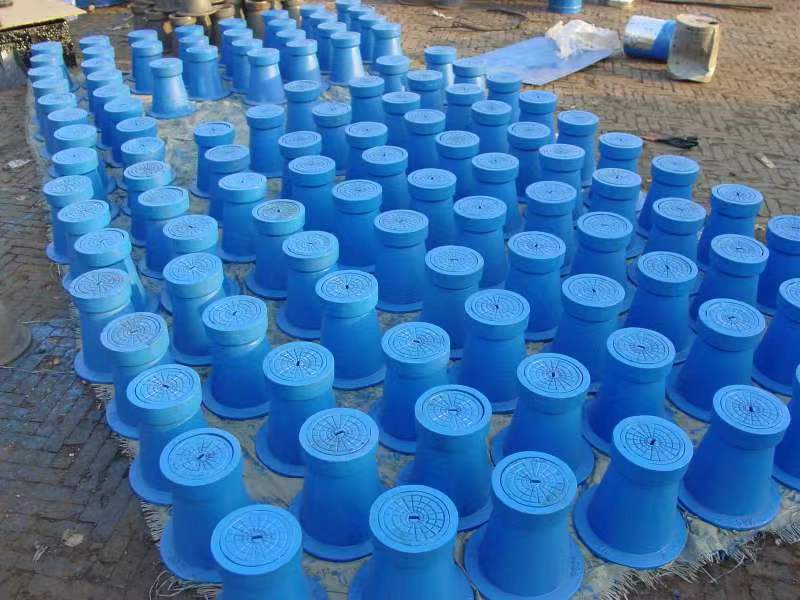High-Density Polyethylene Butterfly Valve Applications and Benefits for Fluid Control Systems
Understanding HDPE Butterfly Valves A Comprehensive Overview
In the realm of fluid management and control systems, valves play a pivotal role in ensuring the efficiency and effectiveness of various industrial processes. One particular type of valve that has garnered significant attention is the HDPE (High-Density Polyethylene) butterfly valve. Known for its durability and reliability, the HDPE butterfly valve represents a crucial component in many applications, particularly in industries such as water treatment, chemical processing, and irrigation.
What is an HDPE Butterfly Valve?
A butterfly valve is a quarter-turn rotational valve that uses a circular disc, or a butterfly, as the closing mechanism. The disc is mounted on a shaft and, when turned, it either fully opens or fully closes the flow of fluid. The HDPE variant is crafted from high-density polyethylene, a thermoplastic known for its excellent chemical resistance, lightweight nature, and durability, making it an ideal choice for various fluid handling applications.
Key Features and Advantages
1. Corrosion Resistance One of the most significant advantages of HDPE butterfly valves is their resistance to corrosion. Unlike metal valves, which can corrode over time due to exposure to harsh chemicals or water, HDPE valves maintain their integrity, ensuring a longer operational life and reducing maintenance costs.
2. Lightweight Design HDPE is considerably lighter than metal materials. This lightweight characteristic makes installation and handling of HDPE butterfly valves easier, allowing for significant labor savings during installation and maintenance procedures.
3. Cost-Effectiveness While initial costs can vary, the long-term savings associated with HDPE butterfly valves often outweigh the upfront investment. Their durable nature leads to reduced replacement frequency and fewer maintenance-related expenses.
4. Versatility HDPE butterfly valves are suitable for a wide range of applications, including potable water, wastewater treatment, chemicals, and agricultural uses. Their versatility makes them a popular choice among engineers and system designers.
hdpe butterfly valve

5. Flow Control The design of a butterfly valve allows for precise flow control. Its quick opening and closing mechanism can provide swift response capabilities in managing flow rates.
6. Sealing Capabilities With good sealing designs, HDPE butterfly valves can minimize the risk of leakage, ensuring that fluids do not escape into the environment, which is particularly critical in sensitive applications.
Applications in Various Industries
HDPE butterfly valves find their usage in several fields. In water treatment plants, they help control the flow of water through various stages of purification. In the chemical processing industry, the valves manage the flow of corrosive and non-corrosive fluids, ensuring safety and efficiency in operations. Additionally, in agricultural applications, HDPE butterfly valves facilitate irrigation systems where controlling water flow is essential for crop health and resource management.
Installation and Maintenance
Installing an HDPE butterfly valve requires careful planning and execution. Proper alignment of the valve within the piping system is critical to avoid undue stress on the valve and to ensure optimal performance. Similarly, periodic maintenance is essential to ensure the longevity of the valve. This includes inspecting the seals for wear, ensuring the disc operates smoothly, and checking for any signs of environmental degradation.
Conclusion
In summary, HDPE butterfly valves offer a superior choice for fluid management in various industries. Their corrosion resistance, lightweight design, cost-effectiveness, versatility, and effective flow control capabilities make them a preferred option among engineers and industry professionals. As industries continue to prioritize efficiency and sustainability, the application and demand for HDPE butterfly valves will likely grow, further solidifying their vital role in modern fluid control systems. Whether in water treatment, chemical handling, or agricultural irrigation, HDPE butterfly valves stand out as indispensable tools in ensuring smooth and efficient fluid flow management.
-
The Smarter Choice for Pedestrian AreasNewsJun.30,2025
-
The Gold Standard in Round Drain CoversNewsJun.30,2025
-
The Gold Standard in Manhole Cover SystemsNewsJun.30,2025
-
Superior Drainage Solutions with Premium Gully GratesNewsJun.30,2025
-
Superior Drainage Solutions for Global InfrastructureNewsJun.30,2025
-
Square Manhole Solutions for Modern InfrastructureNewsJun.30,2025
-
Premium Manhole Covers for Modern InfrastructureNewsJun.30,2025
